In this concluding part of our series on India’s Farm Reforms, we delve into the aftermath of the Kisan Andolan, a movement that has reshaped the contours of Indian agriculture and activism. As the dust settles on the protests, we find ourselves at a crossroads, pondering the future course of this unprecedented movement.
The Andolan was not just a series of protests against specific laws; it was a beacon of hope and solidarity, illuminating issues that extend far beyond the fields. It has ignited discussions on the rights and dignity of farmers, the sustainability of agriculture, and the very fabric of democratic engagement in India. As we explore the lasting impacts and the potential paths forward, it becomes evident that the Kisan Andolan has sown seeds for a deeper understanding and reformation of agricultural policies and practices, not just in India but globally.
Continued Advocacy and Solidarity
The Kisan Andolan’s ripple effects have not been confined to the agricultural sector alone; they have ignited a broader movement of solidarity and advocacy. As highlighted by The Wire, this movement has unified diverse groups, including women, Dalits, and landless workers, in an unprecedented manner. These groups, historically marginalized, found a voice and a platform through the Andolan, addressing not just farm laws but broader social and economic inequities. Their participation has been instrumental in steering conversations around agrarian distress within the wider context of social justice.
The movement has also fostered international solidarity, inspiring similar struggles across the globe. This global resonance speaks volumes about the universal appeal of the fight for democratic rights and social justice. It demonstrates how localized agricultural issues can evolve into symbols of a global struggle for equity and empowerment.

Future Political Trajectory and Challenges
As the Kisan Andolan transitions from active protest to a post-protest phase, questions about its future political trajectory come to the fore. The movement’s engagement with the political system remains a subject of intense debate. While some factions advocate for direct political involvement, others prefer maintaining an independent stance. This divergence of opinions reflects the complex nature of integrating a grassroots movement into formal political processes.
However, the Andolan’s success in mobilizing against the farm laws has opened new avenues for broader social mobilizations. It challenges authoritarian regimes and underscores the power of collective action in advocating for social justice. The movement’s journey henceforth could set a precedent for how agrarian movements engage with and influence political processes in pursuit of their goals.
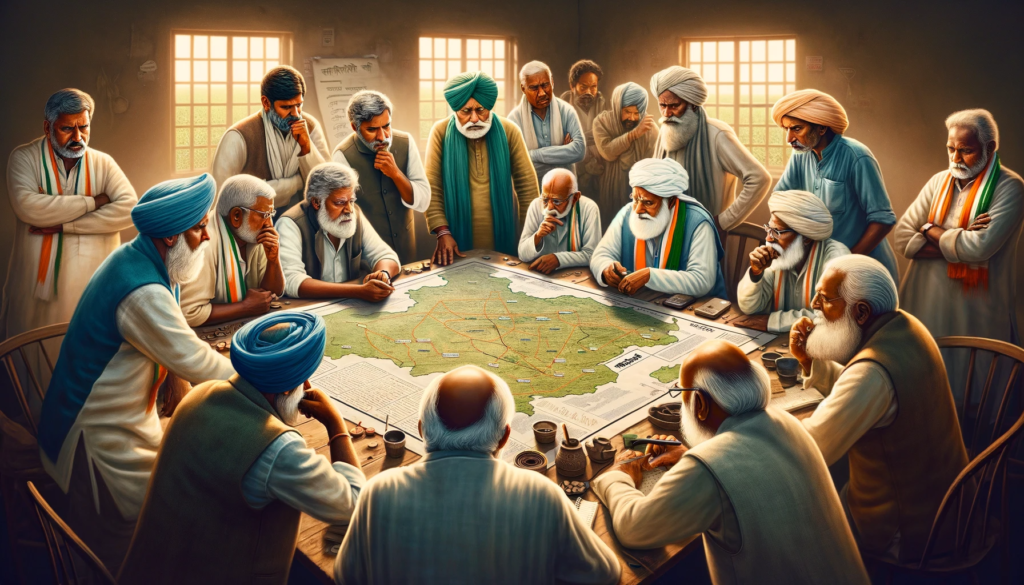
Global Food Sovereignty Movements
The Kisan Andolan’s impact extends into the realm of global food sovereignty movements. As analyzed by the Transnational Institute, the Andolan has made significant contributions to the discourse on just agricultural transitions. It emphasizes the need for sustainable practices and equitable control over agricultural resources.
The movement aligns with global efforts to redefine food systems that are currently dominated by corporate interests, advocating for a model that prioritizes the well-being of small-scale farmers and sustainable environmental practices. This connection underscores a shared vision among global movements, seeking to transform the agricultural landscape into one that is fair, equitable, and sustainable.
The Kisan Andolan, in this context, serves as a powerful example of how localized movements can influence and shape global narratives around critical issues like food sovereignty.

Demands and Future Struggles
The Kisan Andolan, while achieving the monumental feat of the farm laws’ repeal, has broadened its horizon of demands and struggles. This movement has evolved into a platform championing various agrarian issues. Central to these are the guarantees for the Minimum Support Price (MSP), a lifeline for small and marginal farmers.
The movement also demands justice and compensation for the families of the farmers who tragically lost their lives during the protests. Additionally, environmental challenges such as stubble burning have come under the spotlight, with calls for government assistance in adopting sustainable agricultural practices. Despite suggestions of a divided leadership, the movement remains united in its pursuit of these goals.
The unity and persistence displayed signal a resilient future for the Andolan, potentially inspiring similar movements across India and globally. This unified stance also poses challenges, as it seeks to navigate the complexities of policy-making and implementation in the diverse and intricate tapestry of Indian agriculture.
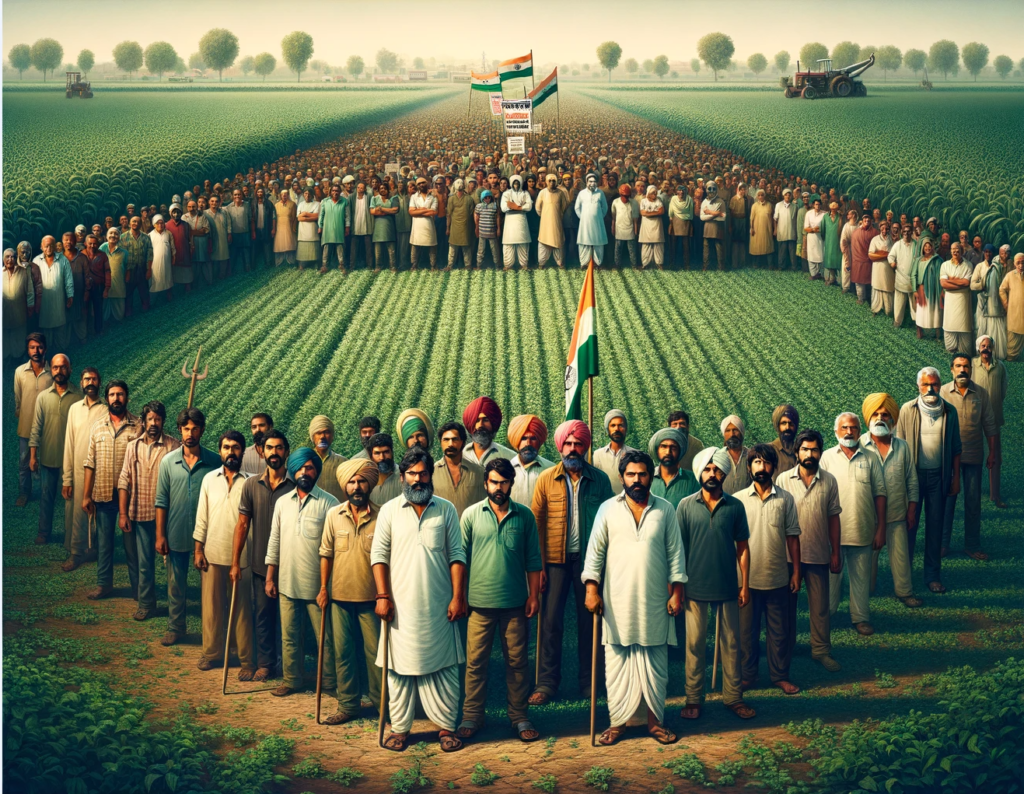
Role of Women and Youth
The Kisan Andolan has been remarkable for the prominent roles played by women and youth, marking a significant shift in the dynamics of agricultural movements in India. Organizations like Purogami Mahila Sangathan have been vocal about the importance of directly addressing the concerns of women cultivators, who often remain the unsung heroes in the agrarian sector.
The participation of women has not only brought unique perspectives to the forefront but also highlighted gender-specific challenges within the agricultural framework. Similarly, the youth’s involvement has been a catalyst for change. Their energy and modern approach to communication have played a crucial role in spreading the movement’s message across diverse languages and cultures, both within India and internationally.
This active participation of women and youth is not just a temporary feature of the Andolan; it signifies a transformative shift in the landscape of agrarian movements, opening up new avenues for engagement and policy influence.

Conclusion and Forward Look
As we conclude our series on India’s Farm Reforms, the Kisan Andolan stands as a beacon of hope and a testament to the power of collective action. The movement has not only shaped the current agricultural policies but also paved the way for future directions in farming practices and farmer welfare. It underscores the importance of solidarity, resilience, and a unified voice in advocating for change.
As we look forward to the unfolding of new chapters in India’s agrarian story, the spirit, and lessons of the Kisan Andolan will undoubtedly continue to inspire and influence the discourse on agricultural reforms, both within India and in the global arena of food sovereignty and farmer rights.
Author’s Note:
In the concluding part of our series on the Kisan Andolan, we delve into the aftermath and the evolving landscape of Indian agriculture post-protests. This section aims to illuminate the broader implications of the movement, its impact on future policy directions, and the ongoing struggles in the agricultural sector. We explore how the Andolan has catalyzed a new wave of advocacy, solidarity, and political discourse, extending beyond the borders of India.
This segment is crafted using insights from various sources, combining expert analysis, journalistic reports, and academic perspectives. While the Kisan Andolan achieved a significant milestone in getting the contentious farm laws repealed, the journey doesn’t end there. The movement has sown seeds for a more inclusive, sustainable, and equitable approach to agricultural practices and policies in India.
The voices and stories that emerged from this movement have highlighted the urgent need for reform and the power of collective action. As we wrap up this series, it is important to remember that the journey of the Indian farmer continues, facing new challenges and opportunities in an ever-changing world.
G. C., Ecosociosphere contributor.
References:
- “Emerging Solidarities in the Kisan Andolan: How Its Composition Makes It a Role Model” – The Wire. Read more.
- “Lessons from the Indian Farmers’ Movement” – Transnational Institute. Read more.

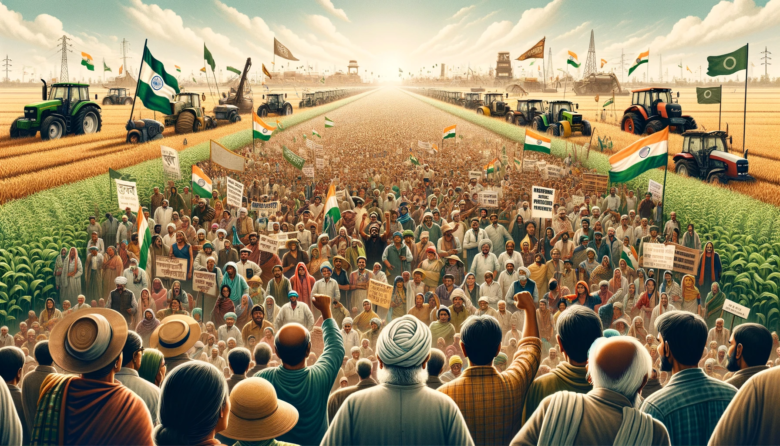
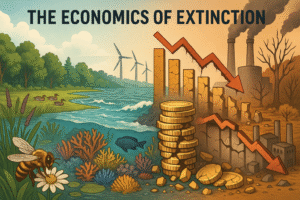
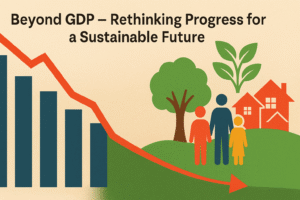

Comments
Thank you for your sharing. I am worried that I lack creative ideas. It is your article that makes me full of hope. Thank you. But, I have a question, can you help me?
Can you be more specific about the content of your article? After reading it, I still have some doubts. Hope you can help me.
Your point of view caught my eye and was very interesting. Thanks. I have a question for you.
Your point of view caught my eye and was very interesting. Thanks. I have a question for you.
Your point of view caught my eye and was very interesting. Thanks. I have a question for you.
Can you be more specific about the content of your article? After reading it, I still have some doubts. Hope you can help me.
Your point of view caught my eye and was very interesting. Thanks. I have a question for you.
Your point of view caught my eye and was very interesting. Thanks. I have a question for you. https://accounts.binance.com/en/register-person?ref=JHQQKNKN